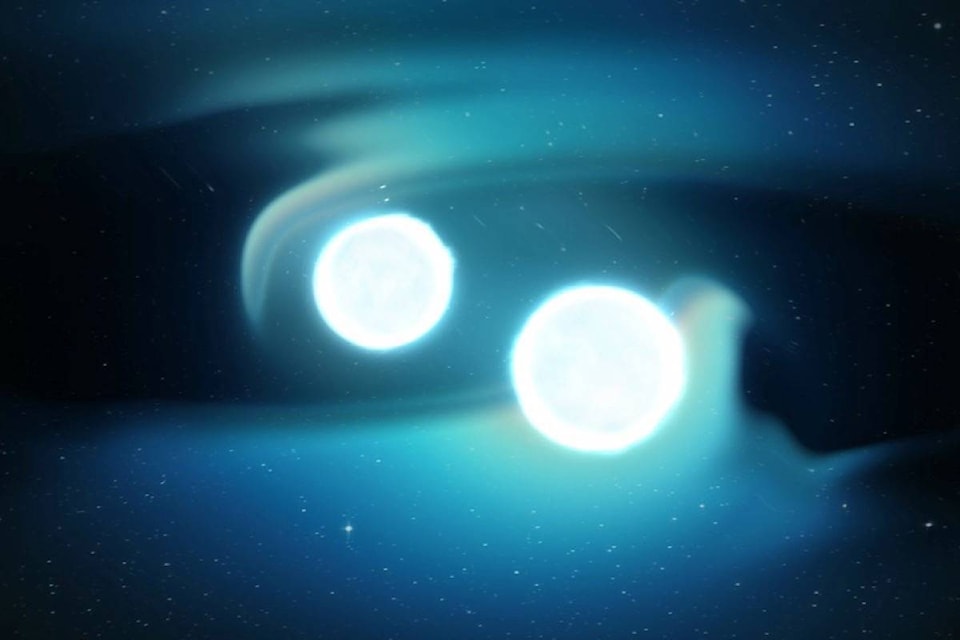Gold falling from the sky.
While North Island College physics instructor Jennifer Fallis Starhunter laughs at the idea, in theory, the concept is somewhat valid, thanks to an “unprecedented” astronomical discovery made public only a few days ago.
“It changes astronomy forever,” explained Starhunter from the Comox Valley campus, whose research work involves explaining the production of chemical elements in stars, novae and some types of supernovae.
For years, scientists and astronomers have theorized how most elements on the periodic table were made (almost all elements on Earth did not form on the planet), and thanks to a rare cosmic event, they now have proof.
“It’s revolutionary astronomy; we’ve never seen anything like this before. We now get an understanding of where chemical elements come from,” she noted.
In late August, Starhunter said scientists discovered the very violent merger of two neutron stars.
Neutron stars are ancient remnants of stars that have reached the end of their evolutionary life, and undergo gravitational collapse, according to NASA.
Protons and electrons are literally scrunched together. Matter is packed so tightly, that a sugar cube-sized amount of material would weigh more than one billion tons.
In order to create new elements, an extreme amount of energy is needed to crush protons, electrons and neutrons together in new configurations.
When two neutron stars come close to each other, their gravities pull on each other and create disturbances in space-time, known as gravitational waves.
The waves, while “extremely difficult to detect,” were picked up by three detectors across the globe, only milliseconds apart, said Starhunter.
While the event occurred 130 million years ago, the gravitational waves only just recently reached the Earth, as they move at the speed of light.
Starhunter added when she began her studies, some of the best evidence to look at how elements were created were supernovas. In the early 2000s, she said there really was only one model, but in the last two decades, computers became much more powerful, and better predictions began to take shape.
“We looked at the supernova and thought, ‘wait – it’s not doing what it should be doing.’ Let’s look at neutron stars – that’s an option. Now we’ve seen one.”
Once the gravitational waves were detected from the neutron star merger, gamma-ray detectors were able to pick up information, and were better able to tell scientists where to look in the sky.
Starhunter said within 24 hours of the event, detectors were able to pick up gamma, gravitational, optical, infrared, radio, UV and x-ray waves.
People with optical telescopes could pick up the sight in the sky, and she noted amateur astronomers could see it around the world.
“It looks like a faint star that wasn’t there before.”
Because of the information gathered, scientists can now begin to study neutron stars more closely, specifically what is inside, how many there might be in the universe and how often a merger might happen.
“For me, it’s a piece of the puzzle that was missing. It fills in a huge gap of knowledge; it’s like turning on a new sense.
“We now know that all gold on earth came from some cataclysmic star event.”
